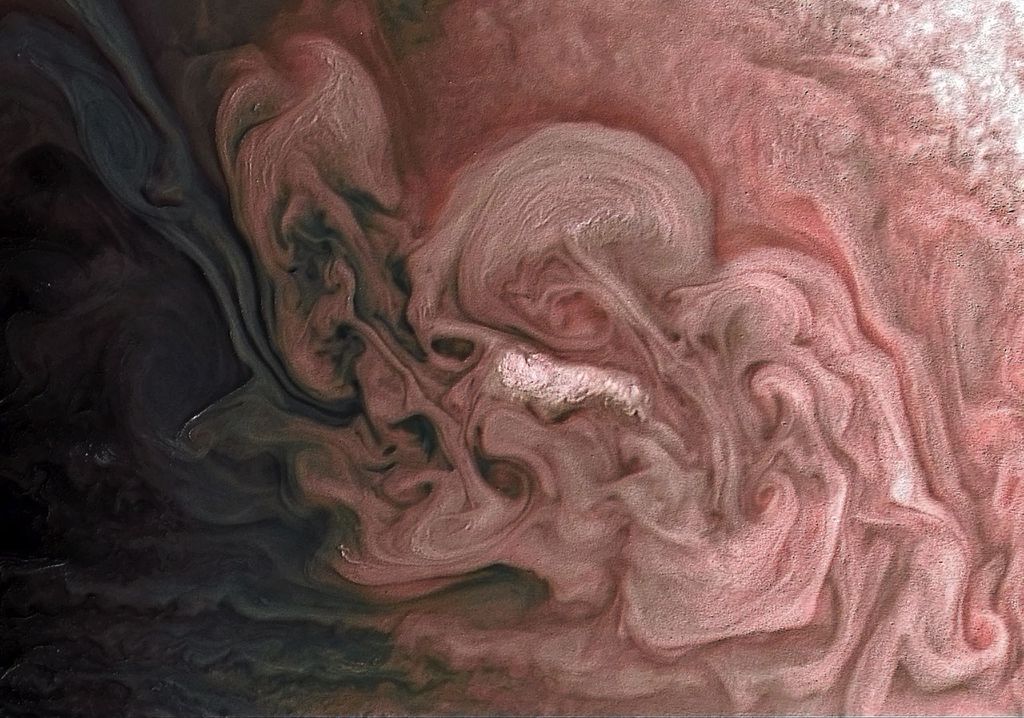1 min read
A “Hubble Atlas” of Ancient Galaxies

Hubble Space Telescope's high resolution allows astronomers to classify galaxies in a cluster (CL 0939+4713) that existed four billion years ago, when the universe was two- thirds of its present age.
The galaxies in this mosaic are arranged according to the well-established system developed by American astronomer Edwin Hubble in the 1920s. Despite the cluster's great distance of four billion light-years, the Space Telescope pictures are sharp enough to distinguish between various forms galaxies.
The top three rows show familiar types of galaxies which are found today in nearby clusters: elliptical galaxies and lens shaped galaxies (SO) which may be transition objects between spiral and elliptical galaxies.
Rows 4 through 7 show spiral galaxies categorized by the openness of their pinwheel- shaped arms (Hubble classification Sa, Sb, Sc, Sd). Many of these have since disappeared through possibly a variety of processes: merger, disruption, and fading. In particular the spirals in row 7 (Sd) show peculiar morphologies.
The bottom row shows galaxies apparently merging into single systems.
Space Telescope reveals that star-forming galaxies were far more prevalent in the clusters of the younger universe than in modern clusters, a result having important implications for theories of galaxy evolution.
The image was taken with HST's Wide Field/Planetary Camera in Wide Field Camera mode, and required a six-hour exposure.
About the Object
- R.A. PositionR.A. PositionRight ascension – analogous to longitude – is one component of an object's position.09h 42m 56.59s
- Dec. PositionDec. PositionDeclination – analogous to latitude – is one component of an object's position.46° 59' 21.99"
- Object NameObject NameA name or catalog number that astronomers use to identify an astronomical object.CL 0939+4713
- Release DateDecember 1, 1992
- Science ReleaseNASA’s Hubble Space Telescope Peers Far Back in Time to Uncover the Secrets of Galaxy Evolution
- CreditAlan Dressier, Carnegie Institution, and NASA Co-investigators: Augustus Oemler (Yale Urnversfty), James E. Gunn (Princeton Universfty), Harvey Butcher (the Netherlands Foundation for Research in Astronomy).
Related Images & Videos

A Cluster of Galaxies Four Billion Light-years Away
This is a NASA Hubble Space Telescope image of a portion of a remote cluster of galaxies (CL 0939+4713) that existed when the universe was two-thirds of its present age (redshift z = 0.4). Hubble's high resolution allows astronomers to study, for the first time, the shapes of...

Distant Galaxy Clusters
This NASA Hubble Space Telescope image reveals one of the faintest and probably farthest clusters of galaxies ever seen. The cluster contains about 30 very faint objects which are unusually small and compact in appearance. (The larger objects are foreground galaxies located in a...
Share
Details
Claire Andreoli
NASA’s Goddard Space Flight Center
Greenbelt, Maryland
claire.andreoli@nasa.gov





























